The Best Alternatives to Mailcharts
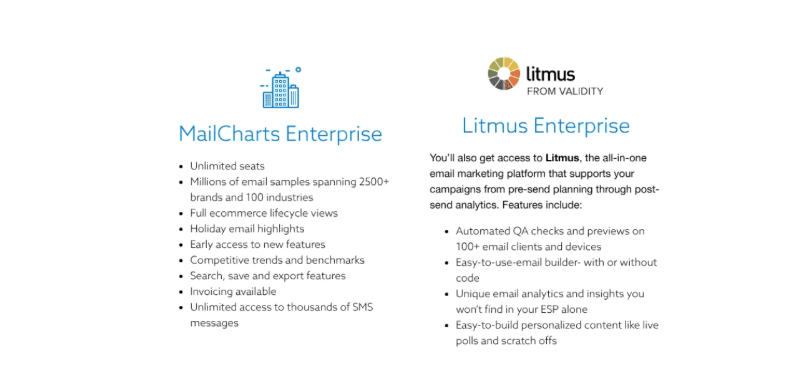
Feeling blindsided by Mailcharts' sudden changes?
You have every right to be frustrated—the company completely removed its pricing model by discontinuing the $149 monthly Pro tier and eliminating standard access.
What does this mean for you and for email marketers everywhere?
If competitor email tracking is essential to your marketing strategy, you now face a choice: pay for a high-ticket Enterprise package tied with software you might not want to use, with undisclosed pricing (likely running into thousands monthly, with annual commitments), or find another solution.
To make matters worse, there's no way to evaluate whether the platform even monitors your key competitors before you commit—particularly problematic if your rivals operate outside mainstream ecommerce and retail.
Here's the silver lining: you have several viable alternatives, each with distinct advantages and trade-offs.
The best option for you is Panoramata.co – for a better price, you'll get more value: you'll be able to track any competitor, and not only their emails, but also ads, SMS, landing pages, social posts and more. With additional features to help you make better marketing decisions, faster.®cal
In this guide, we'll explore your options for maintaining competitive email intelligence without breaking the bank.
Mailcharts and Its Limitations
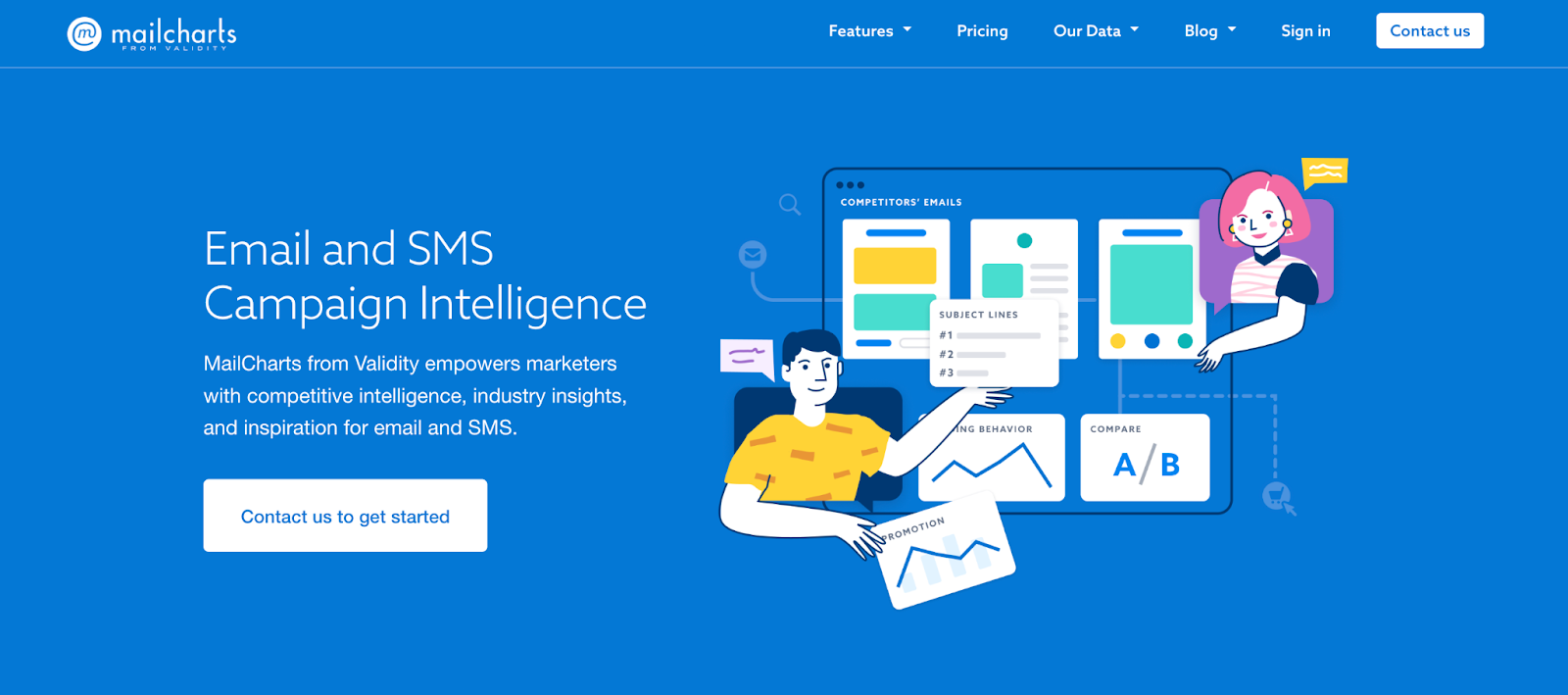
Mailcharts serves as an email monitoring and creative inspiration platform, giving marketing teams visibility into competitor newsletters and SMS campaigns.
The platform has a proprietary collection of email and SMS examples, available exclusively to its subscribers.
Marketing professionals commonly leverage Mailcharts for campaign planning and performance comparison against industry-leading brands. Its primary strength lies in providing creative inspiration for email campaigns.
But here's the catch: Mailcharts only monitors a pre-selected roster of companies. If your competitor isn't already being tracked, you're simply out of options.
The platform focuses heavily on ecommerce and retail businesses. Their coverage is fixed—if your rival is a specialized B2B company or operates in a different vertical, the platform won't help you.
The Mailcharts Pricing Model Upheaval
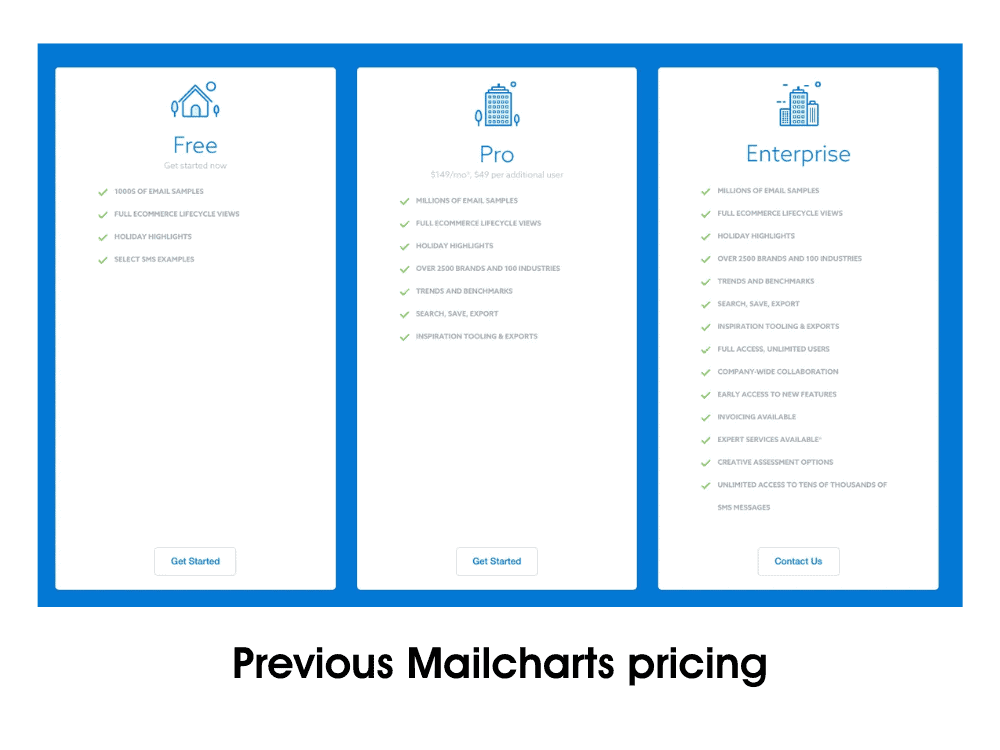
Mailcharts previously offered three subscription levels:
- Free tier: Limited access to thousands of campaign examples
- Pro tier: Full access to millions of emails plus performance data and trends
- Enterprise tier: Complete Pro features plus unlimited team members, comprehensive SMS access, and premium services
In late 2025, Mailcharts discontinued the Pro subscription, leaving Enterprise as the sole paid option.
Previously, the Pro tier cost $149 monthly + $49 per user. Now, Enterprise pricing is quote-based only, requiring direct messages to the company.
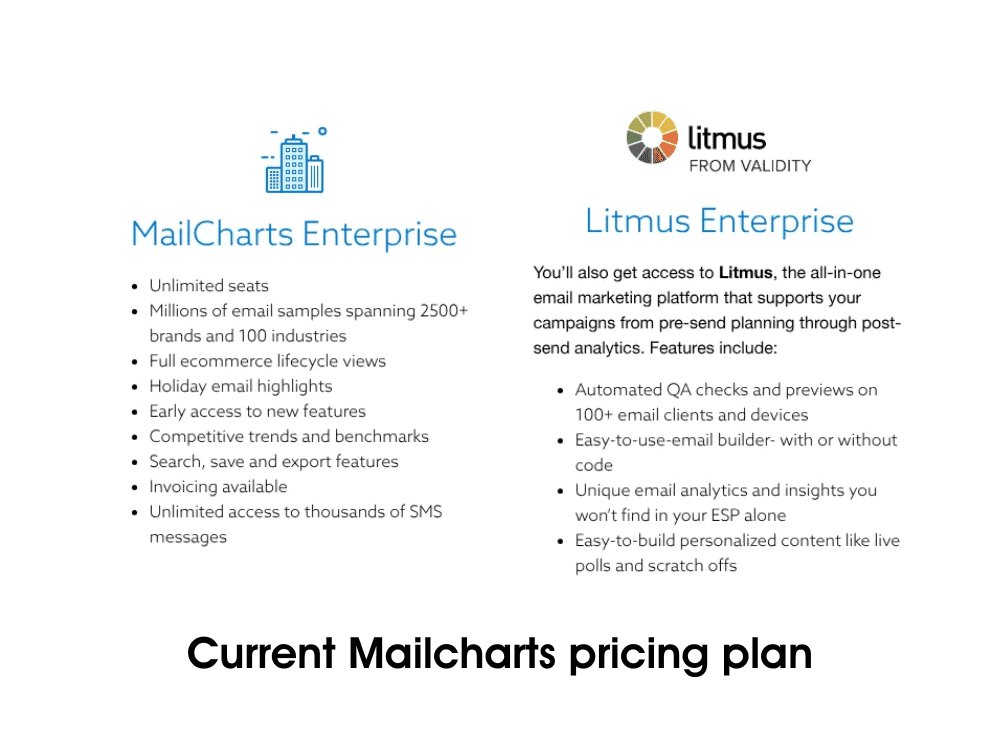
Conservative estimates suggest monthly costs starting in the hundreds of dollars, potentially much higher.
Additionally, the free trial disappeared entirely. Testing the platform before purchase is no longer possible—you must schedule a sales demonstration instead.
For small to mid-sized companies, Mailcharts has become financially impractical.
Spending hundreds or thousands annually on an email intelligence tool that may not even cover your competitive landscape simply doesn't make business sense.
This dramatic pricing restructure has pushed many marketers to explore alternatives. Let's examine your three main options.
Mailcharts Pro Plan Alternatives
Option 1: Panoramata
Best for: Businesses seeking comprehensive competitive intelligence with flexible pricing
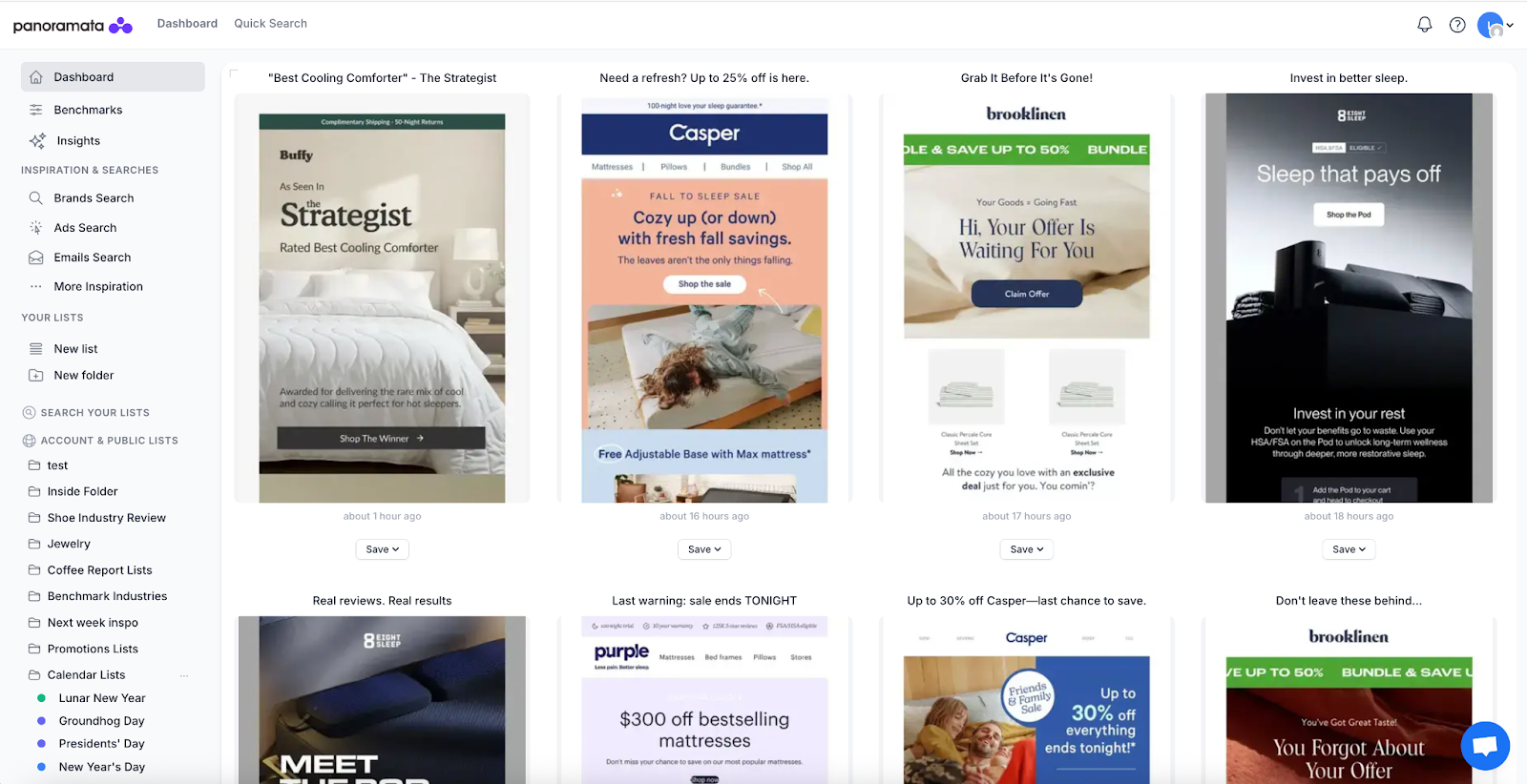
Panoramata represents the most direct replacement for Mailcharts Pro, offering similar functionality at comparable or lower price points—but with significant advantages.
Complete Feature Parity and Beyond
Better than Mailcharts, Panoramata monitors email and SMS campaigns across diverse business types. This includes automated email sequences (flows) like welcome series, post-transaction messages, and cart abandonment campaigns.
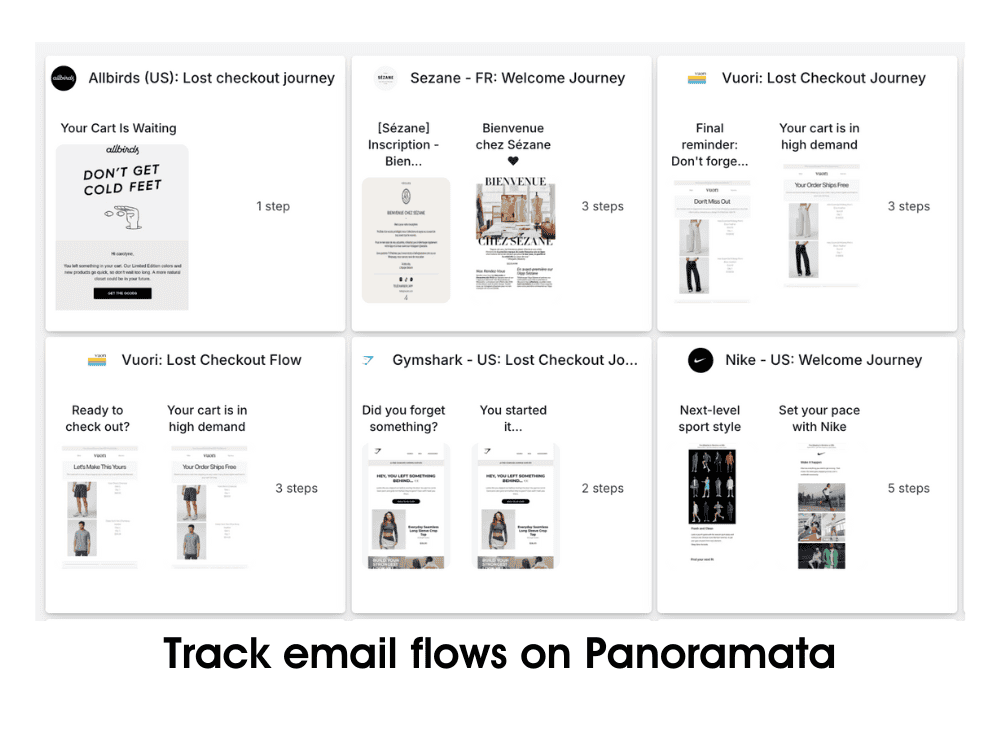
Industry-level analytics and brand comparisons are available, matching Mailcharts' capabilities. Panoramata automatically identifies promotional offers and discount campaigns from competitors.
Industry Coverage Beyond Ecommerce
Mailcharts' brand database has significant gaps, particularly outside the retail and ecommerce sectors. Meanwhile, Panoramata tracks companies across numerous verticals:
- B2B technology
- SaaS platforms
- Educational institutions
- Media companies
- Nonprofit organizations
- Healthcare providers
- Travel and hospitality
Whatever brand you need to monitor, chances are, Panoramata already tracks them.
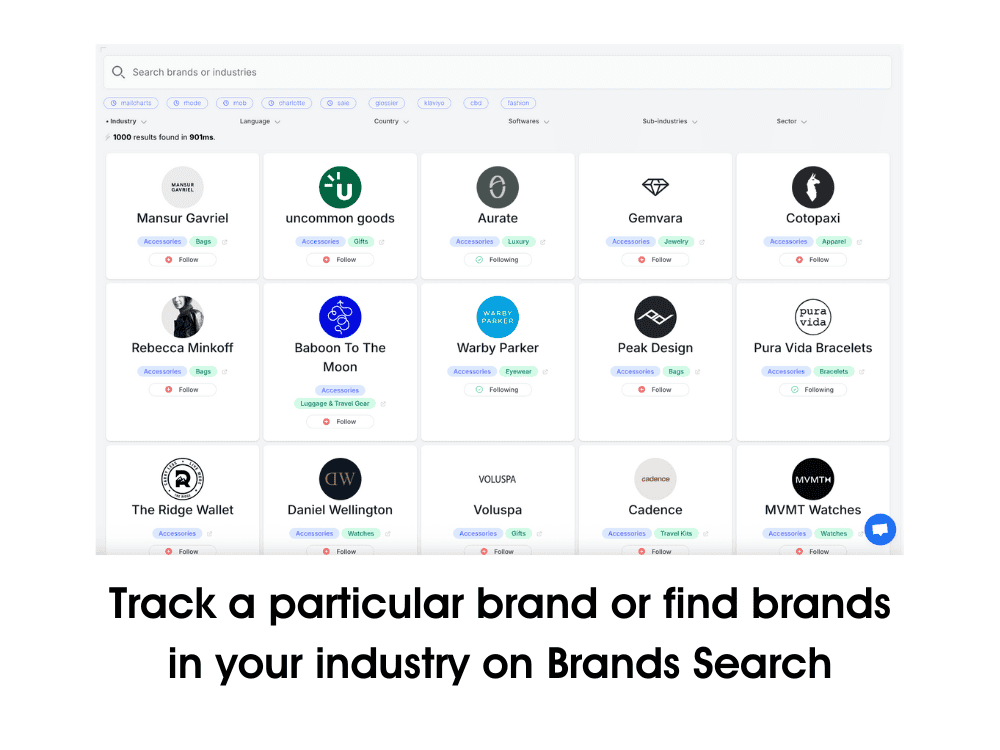
Custom Competitor Tracking on Demand
Here's where Panoramata truly differentiates itself: the platform offers flexible competitor monitoring, including brands not yet in their system.
The platform doesn't limit you to a predetermined list. Request tracking for any company from any location, and the team will set it up at no additional charge.
Multi-Channel Intelligence Platform
Panoramata functions as a comprehensive competitive intelligence solution extending well beyond email and SMS.
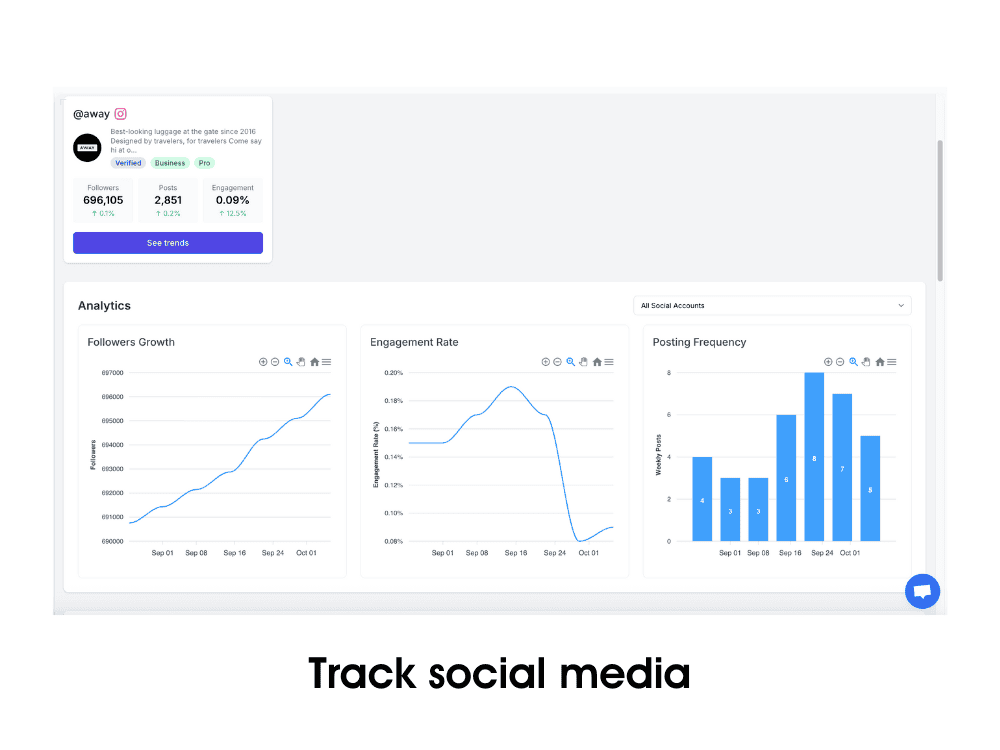
Key capabilities include:
- Advertising monitoring across Meta, TikTok, YouTube, Pinterest, Google Display Network, and additional platforms
- Website tracking for landing pages, home pages, and all modifications over time
- Social media analytics including audience growth and engagement metrics
- Unified dashboard displaying all competitor activities with executive summaries
- Industry benchmark data access
- Custom competitive analysis reports
- Real-time competitor alerts via Slack, email, or web notifications
- Searchable inspiration library for emails, ads, and SMS with keyword filtering and curated collections
- Collaborative swipe file creation for marketing assets
- Technology stack visibility for competitor tools and platforms
- SEO performance metrics and insights
This represents just a portion of Panoramata's full capabilities.
Transparent Flat-Rate Pricing
Unlike Mailcharts, Panoramata uses flat-rate pricing with no per-user fees. Four distinct plan levels are available:
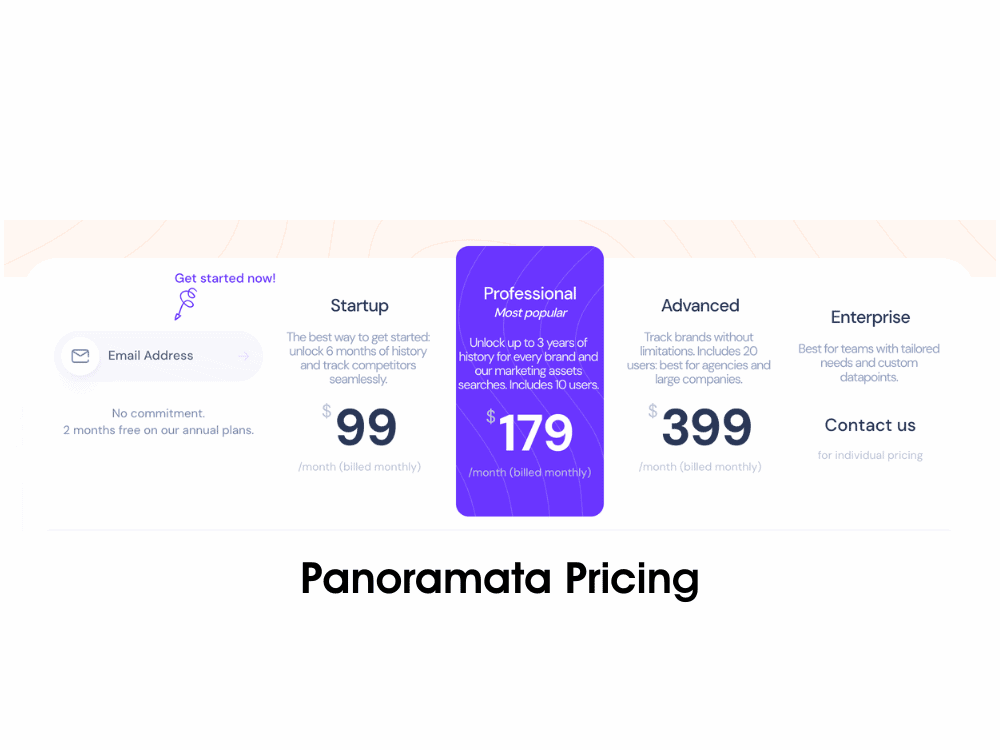
Startup Plan - $99/month
- Competitor tracking: 20 brands maximum
- Historical data: 6 months
- Team access: 3 users
- Benchmark reports: 3
- Custom competitor requests: Available
Professional Plan - $179/month
- Competitor tracking: Unlimited
- Historical data: Complete archive access
- Team access: 10 users
- Benchmark reports: 10
- Custom competitor requests: Available
Advanced Plan - $399/month
- Competitor tracking: Unlimited
- Historical data: Complete archive access
- Team access: 20 users
- Benchmark reports: 50
- Custom competitor requests: Available
Enterprise Plan - Custom pricing
- Competitor tracking: Unlimited
- Historical data: Complete archive access
- Team access: Flexible
- Benchmark reports: Unlimited
- Custom competitor requests: Available
The pricing structure is straightforward and delivers equivalent or superior intelligence compared to Mailcharts Pro.
Pros:
- Significantly more affordable than Mailcharts Enterprise
- Tracks competitors across all industries, not just ecommerce
- Can add any competitor to the tracking database for free
- Multi-channel intelligence beyond just email/SMS
- Flat-rate pricing with no per-seat charges
- Multiple pricing tiers to fit different budgets
Cons:
- Requires subscription commitment (though lower-risk than Mailcharts Enterprise)
- May have a learning curve if switching from Mailcharts
Option 2: Manual Tracking
Best for: Very small teams with limited budgets and only a few key competitors
Manual tracking involves subscribing to competitor emails yourself and organizing them for analysis. This is the most budget-friendly option, though it requires significant time investment.
How Manual Tracking Works
Create dedicated email addresses (using Gmail, Outlook, or similar) for competitor monitoring. Subscribe to newsletters from each competitor you want to track.
Organize emails using folders, labels, or spreadsheets to categorize by competitor, campaign type, or promotion.
Set aside regular time (weekly or bi-weekly) to review competitor emails. Document key insights such as promotional timing, messaging strategies, design trends, and offer structures in a shared spreadsheet or document.
Making Manual Tracking More Effective
Use email forwarding rules to automatically sort competitor emails into specific folders. Take screenshots of compelling email designs for reference.
Create a simple tagging system to identify campaigns by type (promotional, educational, seasonal, etc.).
Track frequency and timing patterns by noting send days and times. Share findings with your team through regular competitive intelligence reports.
Pros:
- Completely free (aside from your time)
- Full control over what you track
- No vendor dependency
- Works for any competitor who sends emails
Cons:
- Extremely time-consuming and labor-intensive
- Difficult to scale beyond a handful of competitors
- No historical data unless you've been tracking from the start
- Missing SMS campaigns unless you also provide phone numbers
- No analytics, benchmarks, or trend data
- Competitor emails may go to spam or be filtered
- Can't track automated flows or sequences effectively
- No visibility into ad campaigns, landing pages, or other channels
When Manual Tracking Makes Sense
This approach works best if you're monitoring just 2-3 competitors, have an extremely limited budget, and have the time to dedicate to regular analysis. It's often a temporary solution while you evaluate paid platforms or build budget approval.
Option 3: Mailcharts Enterprise Plan
What You Get
The Enterprise plan includes everything from the discontinued Pro tier, but at a higher cost.
The Reality of Enterprise Pricing
Mailcharts doesn't publish Enterprise pricing, requiring custom quotes.
Based on typical SaaS Enterprise pricing models and the previous Pro tier at $149/month, conservative estimates suggest the Enterprise plan likely starts at $2,000+ monthly, potentially scaling to several thousand dollars annually depending on your needs.
You must schedule a demo before accessing pricing information, which adds friction to the evaluation process.
Key Limitations Remain
Even with Enterprise pricing, Mailcharts still only tracks brands in their existing database. If your competitors aren't on their list—particularly if they're B2B, SaaS, or specialized industry players—the platform won't help regardless of what you pay.
Pros:
- Established platform with extensive historical data
- Strong focus on ecommerce email marketing
- Unlimited team access
- Comprehensive SMS tracking
- Industry benchmarks and trends
Cons:
- Expensive with no published pricing (likely $500-1,000+/month minimum)
- No free trial available
- Still limited to pre-selected brands in their database
- Cannot request custom competitor tracking
- Heavily focused on ecommerce; limited coverage for other industries
- Requires sales demo before seeing pricing
- Email and SMS only—no ad tracking, landing pages, or social media
- No open rate, performance date, deliverability stats, and any other panel data
Making Your Choice: Quick Comparison
Finding a Mailcharts Alternative: the Bottomline
Mailcharts' elimination of the Pro plan has fundamentally changed the competitive intelligence space for small and mid-sized businesses. While the Enterprise option remains available, its prohibitive pricing and rigid brand limitations make it impractical for most marketers.
For teams with minimal budgets and only a few competitors to track, manual tracking can serve as a temporary stopgap, though it requires significant time investment and lacks the depth of insights a dedicated platform provides.
However, for most businesses seeking to replace Mailcharts Pro, Panoramata emerges as the clear winner.
It delivers everything Mailcharts offered—email tracking, SMS monitoring, industry benchmarks—while addressing Mailcharts' critical limitations.
The ability to track any competitor across any industry, combined with multi-channel intelligence and transparent pricing starting at $99/month, makes Panoramata a more versatile and cost-effective solution.
Frequently Asked Questions
Can I track the same competitors I monitored on Mailcharts Pro?
It depends on which alternative you choose. Panoramata tracks brands across multiple industries and can add any competitor at no extra cost. Manual tracking works for any competitor with an email newsletter. Mailcharts Enterprise only tracks brands already in their predetermined database, which may or may not include your specific competitors.
How long does it take to get set up with a Mailcharts alternative?
With Panoramata, account creation takes minutes, and you can begin accessing competitor intelligence almost immediately—custom competitor tracking requests are typically fulfilled quickly. Manual tracking can start today, but requires ongoing time investment for organization and analysis. Mailcharts Enterprise requires scheduling a sales demo before you can even access pricing or start using the platform.
Do these alternatives only track email marketing, or do they offer broader competitive intelligence?
Manual tracking is limited to whatever you can observe yourself—primarily email newsletters. Mailcharts Enterprise focuses exclusively on email and SMS campaigns. Panoramata provides comprehensive multi-channel intelligence including email, SMS, paid advertising across major platforms (Meta, TikTok, Google), website tracking, social media analytics, SEO metrics, and technology stack visibility—all through a unified dashboard.

